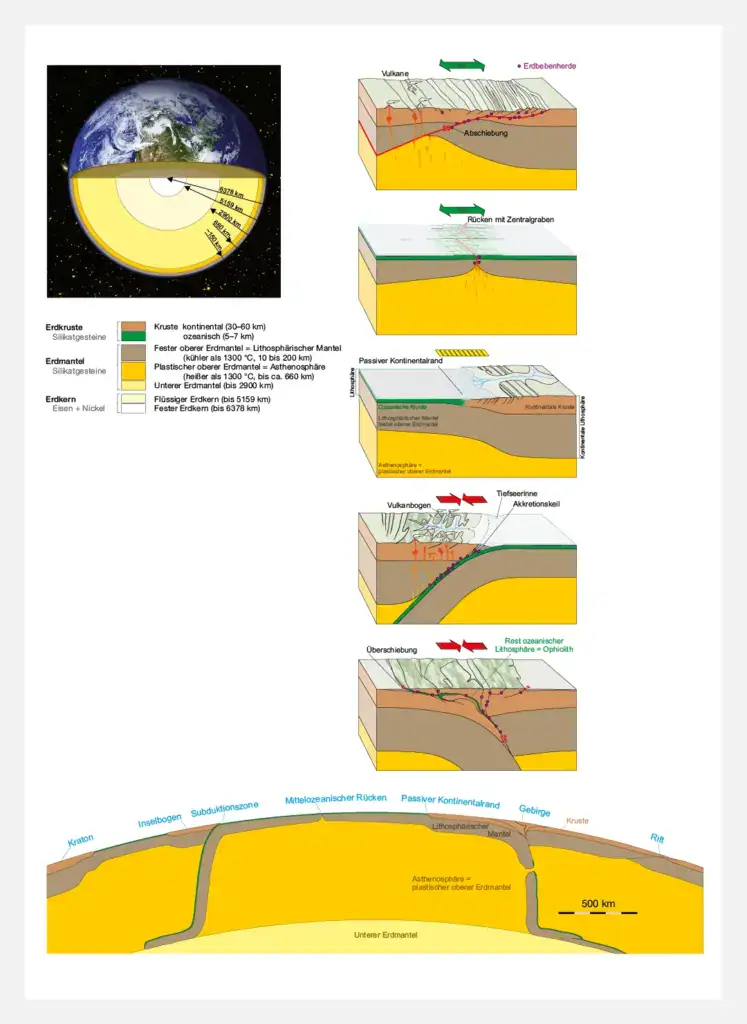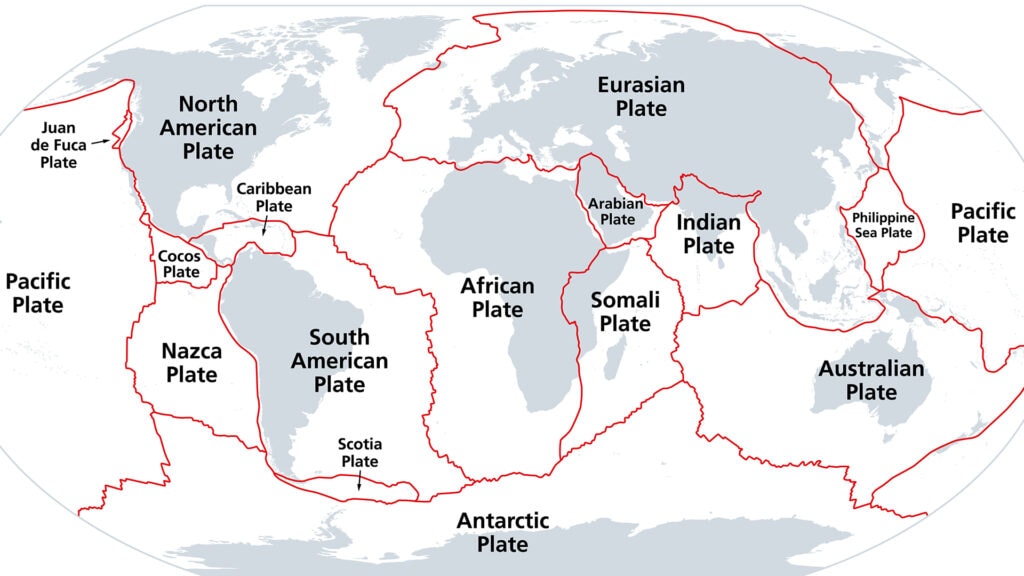The Earth’s surface is divided into around a dozen large and several smaller, rigid plates that carry our continents and ocean basins. Plate tectonics describe the movement and development of these plates.
The movements of the lithospheric plates are based on the structure of the Earth:
The Earth consists of the Earth’s crust, mantle and core. The Earth’s crust consists of solid rock. The upper mantle of the Earth is divided into a solid part (lithosphere) and a plastic part (asthenosphere) with a consistency of which you can imagine like viscous honey. The Earth’s crust, together with the lithosphere, forms lithospheric plates. These plates “float” on the hot and plastic asthenosphere.
A distinction is made between oceanic and continental crust. While the continental crust is usually between 30 and 60 kilometers thick, the bottom of the deep sea consists of much thinner oceanic crust, about 6 kilometers thick.

The Earth consists of the Earth’s crust, mantle and core. The lithospheric plates, consisting of the crust and the upper mantle, flow on the plastic asthenosphere. At their borders, they collide, drift apart or glide past each other – creating earthquakes and volcanic activity. (Image source: Schuster et al., 2015)
At the boundaries of the lithospheric plates (plate boundaries), earthquakes and volcanic activities occur because the plates move against each other. They can move at speeds of up to 15 centimeters per year. Three basic types of plate boundaries can be distinguished, depending on the direction of movement and the involved lithospheric plates: constructive (divergent), destructive (convergent), and conservative (transform) boundaries.
- Constructive or divergent plate boundaries occur when plates move away from each other. During this process, magma rises from the Earth’s mantle to the surface, where it solidifies and forms new crust. A prime example of this are the mid-ocean ridges—vast mountain ranges that can rise up to 4 kilometers high, running through the center of deep ocean basins. At these volcanic ridges, oceanic crust is continually formed as magma from the mantle ascends and solidifies. As a crustal plate moves further away from a mid-ocean ridge, the oceanic crust and the underlying lithospheric mantle become older and thicker. This increased thickness causes the plates to become heavier.
- Destructive or convergent plate boundaries occur when plates move towards each other. The course of the collision processes depends on the types of crust involved. Oceanic crust is thinner and heavier than continental crust, which is relatively thick and light. At subduction zones, the heavier oceanic crust dives beneath the lighter continental crust. The subducted rock material melts in the Earth’s mantle, and magma is formed. The magma then rises to the surface triggering volcanic activity. Such processes at subduction zones lead to the formation of volcanic chains like the Andes or island chains like Sumatra. When two continental plates collide, neither is subducted. Instead, massive deformation occurs, and the crusts are pushed together, leading to the formation of mountain ranges like the Himalayas or the Alps.
- Conservative plate boundaries, also known as transform faults, are rarer. Here, the plates slide past each other without new crust forming or old ones being melted. These movements can nevertheless cause significant earthquakes, such as along the San Andreas Fault in California (USA).

